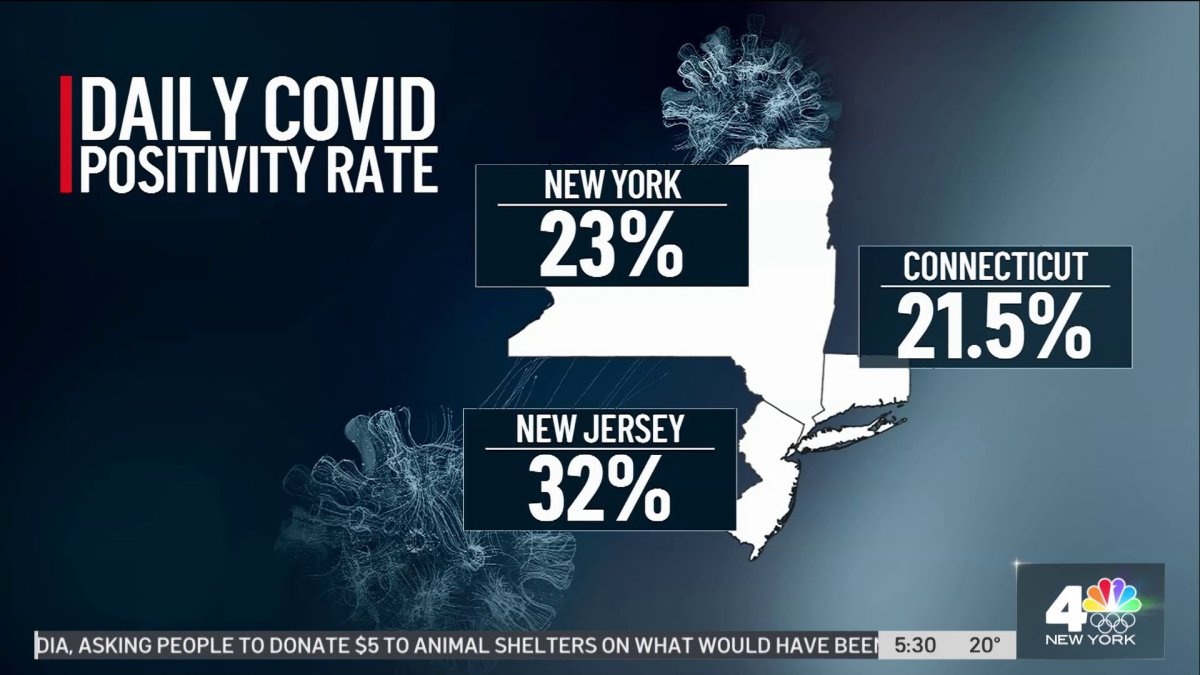
In a grim warning amid near record-high hospitalizations across the state, Hochul reported that more than 9,000 New Yorkers are now hospitalized with COVID-19. NBC New York’s Romney Smith and Tracie Strahan report.
As COVID-19 infections with the omicron variant of the virus surge out of control nationwide, emergency rooms are filling up again -- and one well-known New York City doctor says what they're seeing now is much different than the last two years of the pandemic.
Manhattan emergency room physician Dr. Craig Spencer took to Twitter late Monday night to explain how the current surge is different -- both in who's coming to the ER and how they're being affected by the highly contagious virus.
"Today it seemed like everyone had COVID. Like, so many. And yes, like before, there were some really short of breath and needing oxygen. But for most, COVID seemed to topple a delicate balance of an underlying illness. It’s making people really sick in a different way," Spencer wrote.
Get Tri-state area news and weather forecasts to your inbox. Sign up for NBC New York newsletters.
Signs of Omicron in adults
Spencer cited a few examples - diabetic being tipped into ketoacidosis, the elderly who were so weak from being ill that they couldn't get out of bed, and etc.
"What’s also different now is those COVID cases are often in beds next to patients who’ve done everything to avoid the virus, and for whom an infection might have a dramatic toll. The cancer patient on chemotherapy. Those immunocompromised or severely sick with something else," Spencer said.
He acknowledged, as studies around the world have concluded, that the omicron variant seems to cause milder disease than the delta variant that tore through the country last summer. But at the same time, with so many more people infected, for hospital purposes it ends up not really mattering.
"But there’s just SO much of it and it’s impacting patients in different ways. So even if just a tiny portion of cases need to stay in the hospital, it can turn into a huge influx," Spencer tweeted.
Omicron Variant: Latest News
Swabbing throat for omicron
Spencer, a Manhattan ER doctor affiliated with Columbia University who became a Twitter superstar in the early days of the pandemic for his running commentary on the battle against the virus, recently shared a detailed breakdown of what the omicron cases he and his colleagues have encountered look like so far.
"Every patient I’ve seen with Covid that’s had a 3rd ‘booster’ dose has had mild symptoms. By mild I mean mostly sore throat. Lots of sore throat. Also some fatigue, maybe some muscle pain. No difficulty breathing. No shortness of breath. All a little uncomfortable, but fine," Spencer wrote.
From there, it goes downhill, depending on your vaccination status or lack thereof.
But Spencer's comment about sore throats gets to a recent debate about COVID testing and whether the omicron variant is more common in some parts of the body than previous strains of the virus.
The #SwabYourThroat trend on Twitter grew out of a series of anecdotal reports from symptomatic people who tested negative on rapid antigen tests with nasal swabs, repeated the test with a throat swab and came back positive immediately.
The trend picked up steam with a Dec. 27 tweet from a biologist at University College London, who said she'd tested negative repeatedly until swabbing her throat.
For now neither the FDA nor other public health authorities have changed any instructions or recommendations on how to use at-home COVID tests, which primarily rely on nasal swabs instead -- even though in the UK, authorities have been offering instructions on how to take at-home throat swabs since early 2020.